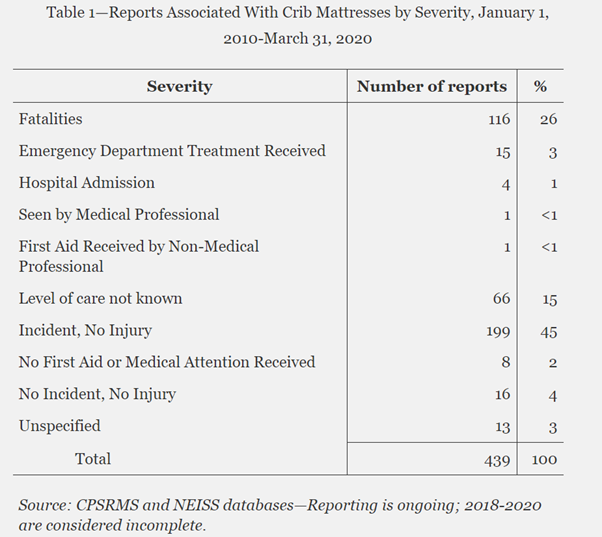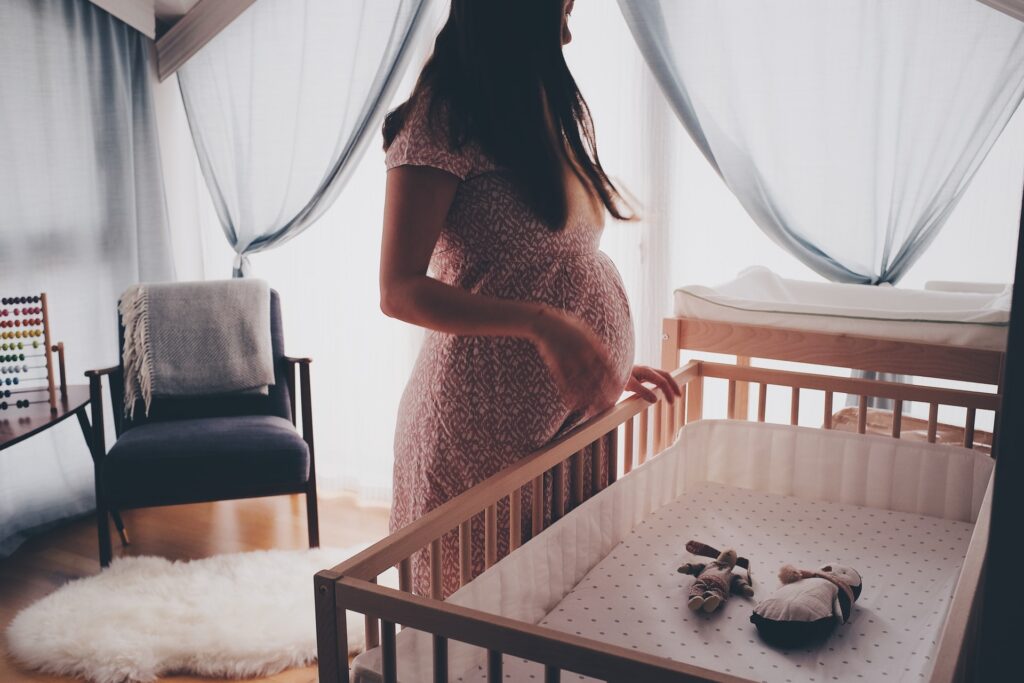The CPSC i.e. the Consumer Product Safety Commission is obligated under the regulation of CPSIA i.e. the Consumer Product Safety Information Act to ensure the safety of infants or toddler products and this includes baby mattresses amongst others. Most countries today follow a similar pattern when it comes to standards of mattresses that are used for infants, and a few of them will be discussed shortly. For a baby mattress to be accepted and qualified for sale, it must meet certain requirements. Further tests are also conducted to ensure that baby mattresses comply to set standards.
Why The Need
Infants are perhaps amongst the most vulnerable of age groups, and they need constant supervision for their protection. However, that is not always possible, and they are often left exposed and vulnerable at night. Hence, where they sleep and what they sleep on is very important, and their guardians must ensure their safety.
In light of reports of fatal incidents of infants concerning crib mattresses, authorities have been sparked into action. In the past, several accidents raised concern among authorities, such as that in 2015 when a child died in an accident that involved an aftermarket play yard mattress.
One of the most common causes of fatalities in infants is suffocation. As they reach the age of 2-6 months, they develop the ability to roll around in their cribs, and often it lands them in a gap between the mattress and the crib wall. Infants, however, do not have the ability to reverse their actions, and being in this position can compromise their airflow, leading to suffocation or worse.
Fire is another hazard for many accidents, and everyone ranging from middle-aged people to infants is at its mercy. Most mattresses in today’s world have to meet strict fire regulatory standards.

Incidents and Causes
Incidents related to mattresses in infants are divided into fatal and non-fatal categories.
Fatal:
- Fit issues (infants face is found in the gap between the mattress and crib wall)
- Face in mattress
- Crib mattress used in a Play Yard
- Found Prone
Non-Fatal:
- Chemical (mattress having some odor/ toxic materials)
- Coil (the coil or spring emerges from the surfaces)
- Crib mattress used in a play yard
- Expand or inflate
- Face in mattress
- Fit issues
- Found prone
- Mattress falls apart
- Softness
What are the Standards
- For most European countries such as the United Kingdom and Germany the BS EN 16890:2017 is followed
- For Australia and New Zealand, the 8811.1:2013 is followed
The Comparison:
In the table below is the comparison of how both these standards compare against each other in relation to a specific hazard.
| Hazard | AS/NZS 8811.1 | EN/GER/EU 16890 |
| Chemical | No | Yes |
| Coil | No | Yes |
| Expand/inflate | No | Yes |
| Mattress in Play Yard | No | Yes |
| Face in mattress | Yes-Firmness test | Yes-Firmness test |
| Fit issues | No | Yes- conical probe, cyclic test |
| Found Prone | Yes-Firmness test | Yes-Firmness test |
| Softness | Yes-Firmness test | Yes-Firmness test |
| Mattress falls apart | No | Yes |
| Sharp Points | No | Yes |
| Flammability | No | Yes |
Factors to Consider
As has been mentioned above, there have been a number of common factors for the reported fatal and non-fatal accidents in previous years; hence a few must be considered before buying a mattress.
- Measurements:
Specific measurements have been laid out for full-size crib mattresses. They must be 27 ¼ inches wide and 51 ¼ inches long and no more than 6 inches thick.
One of the most important points to consider is that, when a mattress is placed in a crib, there should not be a gap larger than ½ inch on any of its sides, and when it is pushed to one side, the gap must not exceed 1 inch.
- Firmness:
As a rule of thumb, the firmer the mattress, the better. Firm mattresses minimize the risk of SIDS i.e., Sudden Infant Death Syndrome as a result of suffocation caused by soft mattresses. The firmness test includes checking whether or not the mattress snaps back immediately when pressed at the center or at its edges. A more reliable method of testing firmness is the test identified in AU/NZ 8811.1:2013 Standard. Mattresses complying with this standard are decompressed, shaken, and agitated in a laboratory for 2 days at different temperatures. Mattresses that score 80% or more on the test are recommended. You can also click here for more test details.
- Non-toxic Chemicals:
GOLS (Global Organic Latex Standard) or GOTS (Global Organic Textile Standard) certification should preferably be considered before buying a mattress. Mattresses must be completely safe for infants as they usually spend a major chunk of their day sleeping.
- Depth and Weight:
The depth of the mattress varies in both coil and foam mattresses, with the coil mattresses going deeper. The depth and weight have little or no bearing on the firmness of the mattress.
- Duration of Use:
Mattresses often have labels on them indicating whether or not they are reversible, and to which time they can be used.
- Mattress Covers:
Mattress covers are also an essential part of the crib. They must be purchased with the foremost emphasis being placed on the safety of the infant. Some of the qualities for a good cover include: Waterproof, Non-toxic, and breathable.
Impact
There will be costs associated with two phases for these mattresses: the production and testing stage.
Most mattresses in today’s market are up to the required standards and require very little modification, hence the costs associated with the modification process will be minimal. This conclusion has been reached as a result of the test conducted by relevant authorities, and it was found that most mattresses on the shelves are compliant with requirements.
The main costs faced by companies will be for testing procedures. In order to meet safety standards and ensure elimination or minimizing of hazards such as softness or flammability, mattresses have to go through rigorous testing. Firmness test and cyclic load test are just a few examples of these.
Conclusion
Consumer safety is one of the most important considerations for producers, however, in the case of infants, safety must be their foremost concern. There has been a significant number of mattress-related accidents both fatal and non-fatal in the case of infants and there has been constant research on how to minimize the frequency of these incidents and make these products safer for all.
The standards have been set and are continually monitored for improvements or deficiencies, and responsibility now falls on the producers to ensure their products comply with these standards and are safe to use for infants.



